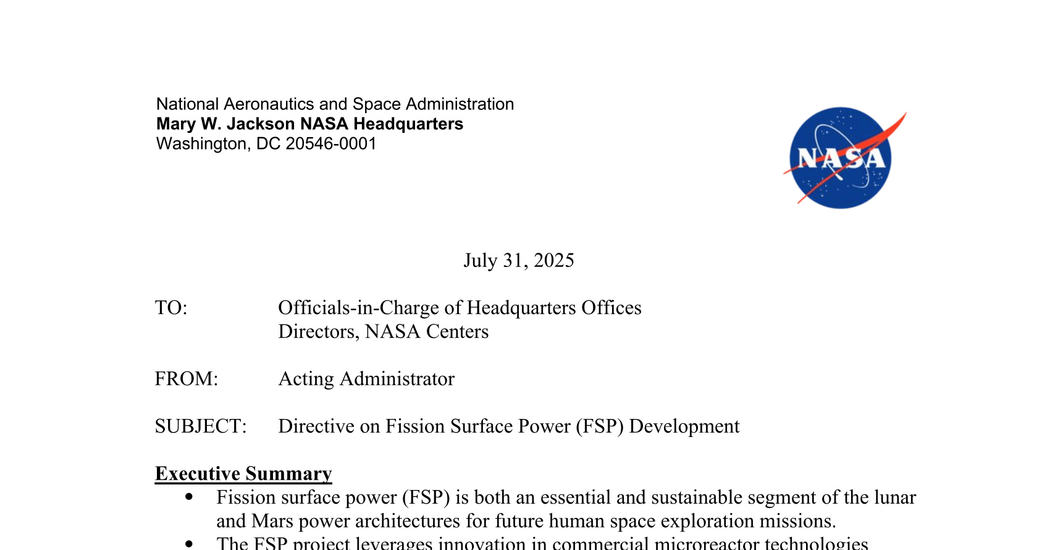Actions to NASA OICS:
•
•
.
•
Within 30 days of this directive, the Associate Administrator (AA) for the Exploration Systems Development Mission Directorate (ESDMD) shall designate a Fission Surface Power Program Executive, who will serve as the empowered and accountable official for end-to-end execution of the FSP effort, including procurement, technology integration, interagency coordination, and performance oversight. The FSP PE is empowered to provide reporting and updates with maximum transparency directly to the Administrator.
Within 60 days of this directive, ESDMD shall issue a new procurement Request for Proposal (RFP) to industry.
The Space Technology Mission Directorate (STMD) shall immediately cease any new FSP technology maturation efforts that don’t support the RFP and align available FY25 funding to support the RFP initial award amount.
ESDMD, through the FSP PE, shall lead the program with support from Office of General Counsel and Office of Procurement. The FSP project shall not exceed 15 Full time engineer equivalents on a yearly basis and a maximum of 10% overhead cost to manage. The project shall adopt a minimum viable structure (MVS) for its management team, composed of essential civil servant roles and supported by flexible, targeted contractor expertise. This structure shall prioritize agility, reduce duplication, and focus on milestone-driven delivery.
The Partnerships Office is excused from participating in the management and execution of the Space Act Agreement.
This Fission surface power RFP shall feature:
•
•
•
•
The ability to award to two providers within six months of the release of the RFP with the option to down-select to one provider at PDR
Flexibility to industry provider in extent of demonstration capability
Minimum 100kWe power output
Assumed use of a heavy class lander (up to 15 metric tons mass available)
о Readiness to launch by the first quarter of FY30
A closed Brayton cycle power conversion system to reduce risk and ensure
extensibility to higher power systems
NASA’s funded Space Act Authority (SAA) to grant maximum flexibility to industry
in how to efficiently design and develop FSP flight systems
Completion of an operational space flight system and an option for continued
sustainment support
Flexibility to NASA to award contract value based on proposed industry capability, potential industry cost-sharing (i.e., in exchange for industry owning and operating
the reactor power once operational), and availability of funds
Payments via milestones with no less than 25% of the total contract value paid after the successful checkout and delivery of the FSP flight system.
